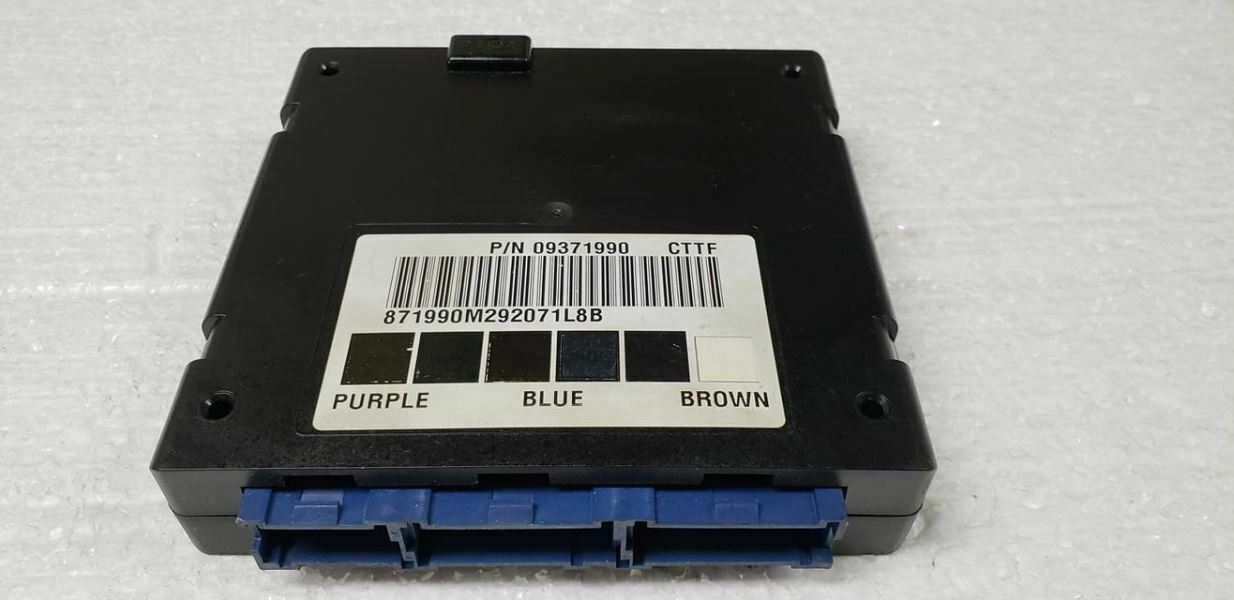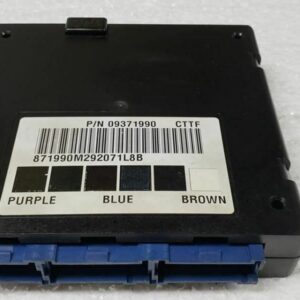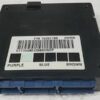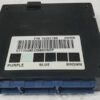Restore Your GM Truck’s Electrical System
Are you battling frustrating electrical gremlins in your truck or SUV? Flickering lights, unresponsive power windows, a security light that won’t turn off, or even a vehicle that refuses to start can often be traced back to a single component: the Body Control Module (BCM). As a technician with over two decades of experience, I’ve seen how a failing BCM can wreak havoc, making a reliable vehicle feel unpredictable. This isn’t just an inconvenience; it’s a matter of function and safety. This module is the central command for your vehicle’s body electronics, and when it fails, the symptoms can be widespread and confusing.
We offer a dependable and straightforward solution. This Body Control Module is meticulously prepared and programmed with the latest GM software releases, specifically coded to your vehicle’s unique Vehicle Identification Number (VIN). This critical step ensures seamless integration and proper function right out of the box, eliminating the need for an expensive trip to the dealership for programming. By providing us with your VIN at checkout, you receive a part that is ready for installation, getting you back on the road with confidence.
A Technician’s Notebook: The Intermittent No-Start
I remember a 2000 Silverado that came into my bay with a classic head-scratcher. The owner said it would randomly fail to crank, but all the battery and starter tests came back perfect. The security light was also flickering intermittently. After checking all the primary power and ground circuits, we hooked up the scan tool and found a slew of communication error codes (U-codes) pointing to the BCM. The internal circuitry had failed, disrupting the PassLock security signal to the PCM. Installing a properly programmed 2000 Tahoe BCM restored the security handshake and solved the no-start issue for good. It’s a reminder that with modern vehicles, electrical problems are often about data, not just power.
Common Signs of a Failing Body Control Module
- ✔ Power windows, door locks, or mirrors operating erratically or not at all.
- ✔ Interior or exterior lights flickering, staying on, or not working.
- ✔ The security or anti-theft light is illuminated on the dash, possibly causing a no-start condition.
- ✔ Horn honking unexpectedly or not working when pressed.
- ✔ Inaccurate or dead gauges on the instrument cluster.
- ✔ Communication error codes (like U0140) when scanned with a diagnostic tool.
- ✔ Problems with the radio or climate control systems.
A Straightforward Guide to Installation
- ✔ Safety First: Always disconnect the negative terminal from your vehicle’s battery before beginning any electrical work.
- ✔ Locate the BCM: On most compatible models like the Tahoe, Suburban, and full-size pickups, the BCM is located under the driver’s side of the dashboard, to the left of the steering column. On S-series trucks and SUVs, it is often found behind the center dash.
- ✔ Disconnect and Remove: Carefully unplug the electrical connectors from the old BCM. They have locking tabs that need to be depressed. Once disconnected, unbolt or unclip the module from its mounting bracket.
- ✔ Install the New Module: Mount your new, pre-programmed BCM in the same location. Securely plug in all the electrical connectors, ensuring each one clicks into place.
- ✔ Reconnect Power: Re-attach the negative battery terminal. Turn the key to the ‘ON’ position (without starting the engine) and verify that your lights and accessories are functioning.
- ✔ Perform Relearns (If Needed): Start the vehicle. In some cases, you may need to perform additional procedures as outlined below.
Post-Installation Notes
While our programming handles the heavy lifting, some vehicle systems may require a ‘handshake’ with the new BCM. If you encounter the following, a simple relearn procedure is necessary:
- Airbag System Sync: If the airbag light is on after installation, a professional scan tool is needed to perform the ‘Setup SDM Primary Key in BCM’ procedure. This syncs the new BCM with the airbag system.
- Brake Pedal Position Relearn: On some models, a brake pedal position sensor recalibration may be required to ensure correct brake light and traction control operation.
Verified Fitment for These GM Models
This module, identified by part numbers 09385236, 19208539, or 9371990, is a direct-fit replacement for the following vehicles. Please match your part number to ensure compatibility.
- 2000 Chevrolet Tahoe (LH dash)
- 2000 GMC Yukon & Yukon XL 1500/2500 (LH dash)
- 2000 Chevrolet Suburban 1500/2500 (LH dash)
- 2000 Chevrolet Silverado 1500/2500 Pickup (LH dash)
- 2000 GMC Sierra 1500/2500 Pickup (LH dash)
- 2001 Chevrolet S10 / GMC Sonoma (center dash)
- 2001 Chevrolet Blazer S10 / GMC Jimmy S15 (center dash)
- 2001 Oldsmobile Bravada (center dash)
- 2001 Chevrolet Astro / GMC Safari (LH dash)
Frequently Asked Questions about the 2000 Tahoe BCM
What does the Body Control Module do?
The BCM acts as the computer for your vehicle’s body and cabin electronics. It controls functions like power windows, locks, interior/exterior lighting, security system, wipers, and more. When it fails, these systems can become erratic.
Why do you need my VIN?
Your VIN (Vehicle Identification Number) allows us to program the BCM with the exact software and settings for your vehicle’s specific options and features. This ensures it works correctly right out of the box, saving you a trip to the dealer for programming.
Is this a difficult part to install myself?
For most DIYers with basic tools, this is a manageable job. The main challenge is typically accessing the module under the dashboard. Since our modules are pre-programmed, you avoid the most complex part of the process.
Do I need to send my old BCM back?
No, there is no core charge for this part. You can keep your original module.
What if my airbag light comes on after installation?
This is a normal possibility. The new BCM needs to be electronically introduced to the airbag’s computer (SDM). This requires a ‘Setup SDM Primary Key in BCM’ procedure, which can be performed by any professional shop with a high-level diagnostic scan tool.



